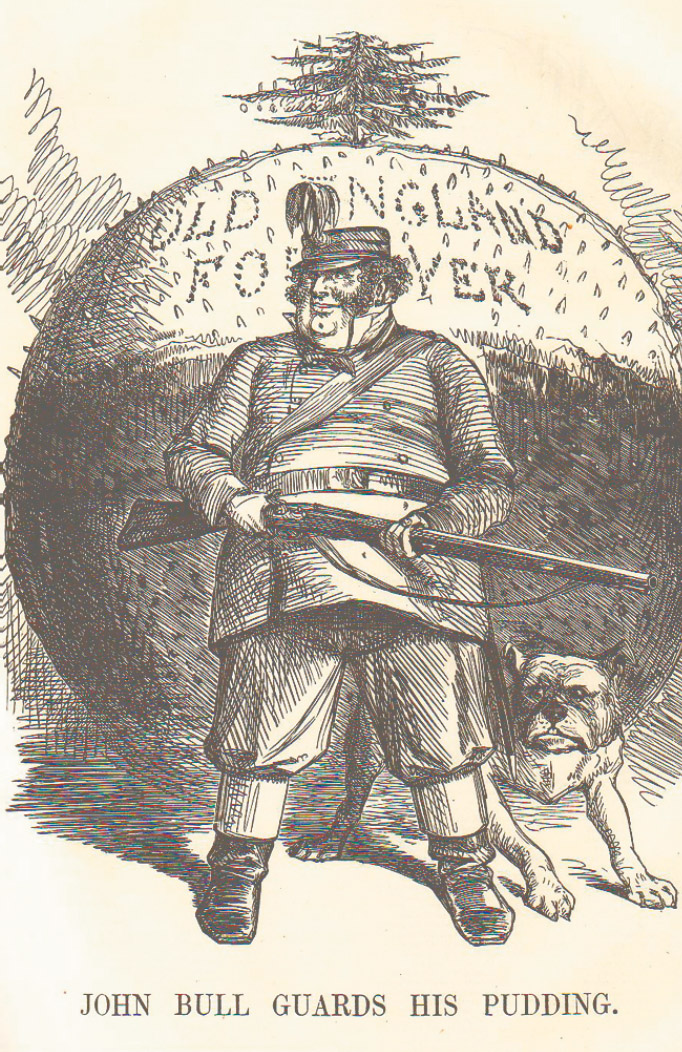
letters and miscellany
[caption id="AroundOurScepteredIsle_img1" align="aligncenter" width="682"]

AT BERKELEY CASTLE, GLOUCESTERSHIRE
A TOMBSTONE TELLS the tale of Dicky Pearce:
Here lies the Earl of Suffolk’s fool, Men called him Dicky Pearce. His folly served to make men laugh, When wit and mirth were scarce. Poor Dick alas is dead and gone, What signifies to cry. Dickys enough are still behind To laugh at by and by. Buried 18 June 1728 Aged 63 years
The unfortunate jester died falling from the balcony of the Great Hall at Berkeley Castle and is buried in the churchyard next door. Ironically, there were no more Dickys left behind; he was the last English court jester.
WHAT‘S FOR PUD?
HERE IS A CLASSIC English sweet that always draws rave reviews from visitors to our sceptered isle.
Sticky Toffee Pudding
Pudding
3/4 cup dates, roughly chopped
1 cup boiling water
1/4 cup of butter
3/4 cup of sugar
1 cup flour
1 tsp. baking powder
1 medium egg
1 tsp. baking soda
1 tsp. vanilla
Toffee Sauce
1/4 cup butter
1/3 cup brown sugar
1/4 cup cream
Pour boiling water over dates and baking soda, and leave to stand. Cream the butter and sugar; gradually stir in the egg, flour and baking powder. Stir in the dates with the liquid and add vanilla. Put the mixture into a greased two-quart baking dish and bake for 40 minutes in a 350 degree oven. Make the sauce by boiling the ingredients together for two minutes and pour over the warm pudding. Serves 4-6. Enjoy!
FROM OUR READERS
IN THE ARTICLE “The England That Alfred Made,” in the September issue, I noticed the picture on page 41 is designated as the altar of Winchester Cathedral. The picture is of the baptismal font, not the altar (note the direction the chairs are facing). The font is a solid piece of black stone, probably marble, and is huge. Winchester is a beautiful cathedral and has survived so many tribulations. I have always said the history of Great Britain can be found in its churches and cathedrals. Thank you again for your informative articles and beautiful photographs.
Nancy H. Stone
River Ridge, La.
I ENJOYED THE “CONQUEST” issue featuring D-Day 1944. This article reminded me of a two-part article beginning in the April/May 1981 issue of British Heritage, “The Black Prince” by Alan Wykes. As I read this recent issue, I kept waiting to see a reference to similarities between the tactics employed in the 1346 and the1944 invasions that I had seen in the 1981 article.
George Blancett
Memphis, Tenn.
ODDS AND ENDLETS
CAMPAIGN COLORS HAVE long been a part of English political emblems and electioneering. The Tories parade blue, Labor red and the Lib-Dems yellow. Back in the latter 18th century, the tradition began when the opposition Whigs adorned their campaign with blue and buff (after the uniforms of the American revolutionary army).
AT ALL SAINTS CHURCH in Brixham on the south Devon coast the familiar notes of “Abide With Me” ring forth from the carillon of bells at eight each evening, recalling that the 18th-century vicar, Rev. Henry Francis Lyte, wrote one of the world’s most famous hymns here.
BRITAIN HAS SOME 8,000 medieval churches. Sixty percent of these are reckoned to be home to bats, which can’t be legally expelled or moved. Hmm. Sounds like Parliament has had some bats in its own belfry.
OFF WITH A BANG!
GEORGE FRIEDRICH HANDEL, court musician to King George II, debuted “The Music for the Royal Fireworks” on April 27, 1749, to celebrate the treaty ending the War of the Austrian Succession. The music was synchronized with elaborate pyrotechnic displays. But what with relentless English rain (and setting fire to one of the platforms), the fireworks fizzled ignominiously. The festive piece went on to become one of Handel’s most popular compositions.
THE 10 MOST BRITISH BOOKS
A RECENT POLL of Anglophiles and travelers to Britain asked which great volumes most memorably evoke the quality of Britishness. Consider the top 10 and their splendid contribution to our understanding of life, and life in Britain.
John Galsworthy, The Forsyte Saga
Jane Austen, Pride and Prejudice
George Eliot, Middlemarch
Henry Fielding, Tom Jones
Geoffrey Chaucer, The Canterbury Tales
A.A. Milne, Winnie-the-Pooh
Sir Walter Scott, Ivanhoe
Lewis Carroll, Alice in Wonderland
Evelyn Waugh, Brideshead Revisited
Thomas Hardy, The Mayor of Casterbridge
SIGNS OF THE TIMES
WE‘VE ALL HAD AN occasional laugh over English signs. Here are a few samples:
In the kitchen at a London office: “After tea break staff should empty the teapot and stand upside down on the draining board.”
Outside a Doncaster secondhand store:“We exchange anything-bicycles, washing machines, etc. Why not bring your wife along and get a wonderful bargain?”
Notice in a dry-cleaners’window: “Anyone leaving their garments here for more than 30 days will be disposed of.”
SOWING WILD BLUEBLOOD
RESTORATION POET John Dryden described King Charles II (1660-1685) as having “scattered His Maker’s image throughout the land.” While illegitimate children have been a not uncommon royal byproduct through the centuries, Charles II is by no means the record holder. Henry I (1100-1135) had more acknowledged bastard offspring than any other English king. Ironically, neither of these randy monarchs managed to leave a legitimate male heir.
HOW TO RING BRITAIN
THE BRITISH TELEPHONE numbers provided in British Heritage include an initial zero, which callers from North America do not need to dial when placing a call to Britain. North American callers should dial 011-44 in place of the initial zero.
When traveling in Britain, the telephone numbers should be entered exactly as they are printed in BH.





Comments